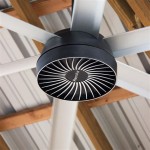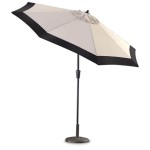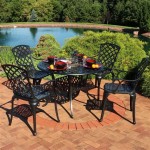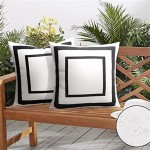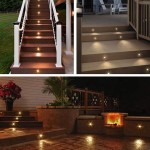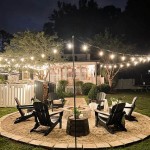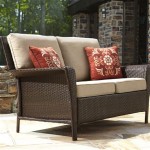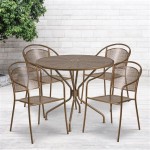Best Outdoor Teak Dining Tables: A Guide to Durability and Style
Outdoor dining has become an increasingly popular way to enjoy meals and socialize, blurring the lines between indoor comfort and the beauty of the natural environment. Selecting the right outdoor dining table is crucial for creating an inviting and functional space. Teak dining tables are frequently chosen for their inherent durability, natural beauty, and resistance to the elements. This article will explore the key considerations when purchasing a teak outdoor dining table, highlighting aspects of quality, design, and maintenance.
Understanding Teak Wood: The Foundation of a Lasting Table
Teak wood is a dense, close-grained hardwood sourced primarily from Southeast Asia. Its exceptional properties distinguish it from other wood species commonly used for outdoor furniture. The high oil content naturally present within teak wood acts as a protectant, repelling water and preventing decay. This inherent resistance to moisture, rot, and pests makes teak an ideal material for outdoor use, requiring minimal maintenance compared to other options.
Teak's structural integrity is also noteworthy. Its density provides exceptional strength and stability, ensuring the table can withstand daily use and varying weather conditions. Unlike some woods that become brittle and crack over time, teak retains its strength and form for decades, making it a worthwhile investment. The ability of teak to withstand the elements is further enhanced by its natural resistance to warping and splitting, preserving the table's aesthetic and functionality.
The environmental impact of teak sourcing is a key factor for conscientious consumers. Responsible sourcing practices, such as those certified by the Forest Stewardship Council (FSC), ensure that teak is harvested sustainably, minimizing deforestation and promoting responsible forest management. Choosing FSC-certified teak demonstrates a commitment to environmental responsibility and helps protect valuable ecosystems.
Evaluating Table Quality: Construction and Craftsmanship
The longevity and performance of a teak dining table are directly linked to the quality of its construction. Several factors contribute to the overall quality, including the grade of teak used, the joinery techniques employed, and the finishing details.
Teak is typically graded based on its age and the part of the tree from which it is harvested. "Grade A" teak, the highest quality, comes from the heartwood of mature teak trees. This heartwood is rich in natural oils and boasts a uniform color and grain. Tables made from Grade A teak are the most durable and aesthetically pleasing. "Grade B" and "Grade C" teaks are harvested from younger trees or the outer sapwood. These grades are less dense, contain less oil, and may exhibit variations in color and grain. While less expensive, tables made from lower grades of teak are less resistant to the elements and may not last as long.
The joinery used in constructing the table is also crucial. Traditional joinery techniques, such as mortise and tenon joints, are known for their strength and durability. These joints involve interlocking pieces of wood that are glued and often reinforced with dowels or screws. Dovetail joints are another strong option, particularly for connecting table leaves or aprons. Avoid tables that rely solely on screws or staples, as these methods are less robust and prone to failure over time. The precision of the joinery also indicates the overall craftsmanship. Gaps or uneven surfaces suggest poor construction and can weaken the table’s structural integrity.
Finishing details, such as sanding and sealing, contribute to the table's appearance and longevity. The wood should be smoothly sanded to prevent splinters and create a comfortable surface for dining. While teak's natural oils provide protection, a sealant can be applied to further enhance its resistance to moisture and stains. However, many owners prefer to allow teak to weather naturally to a silver-gray patina, a process that does not compromise its structural integrity.
Design and Functionality: Choosing the Right Table for Your Space
Beyond quality and durability, the design and functionality of a teak dining table should align with your specific needs and the aesthetic of your outdoor space. Consider the size and shape of your patio or deck, the number of people you typically entertain, and your personal style preferences.
Table size is a primary consideration. Measure your outdoor space carefully to ensure the table fits comfortably without overcrowding the area. Consider the space needed for chairs and for people to move around the table. Determine the number of people you typically accommodate for meals. A rectangular table is often a good choice for larger groups, while a round or square table may be better suited for smaller gatherings or intimate settings. Extendable teak tables offer versatility, allowing you to expand the seating capacity when needed and reduce the table size for everyday use.
The table's style should complement your existing outdoor furniture and the overall design of your home and garden. Teak dining tables are available in a wide range of styles, from classic and traditional to modern and contemporary. Consider the shape and detailing of the table legs, the design of the tabletop, and any additional features, such as built-in umbrella holes or storage. A traditional teak table may feature ornate carvings and a warm, honey-colored finish, while a modern table may have clean lines, a minimalist design, and a natural, weathered finish.
Functionality extends beyond seating capacity and style. Consider the table's weight and ease of movement. A heavy table may be more stable in windy conditions, but it can be challenging to move around for cleaning or rearranging your outdoor space. Tables with adjustable feet can be helpful for leveling the table on uneven surfaces. Also, consider the ease of cleaning and maintenance. Teak is relatively easy to clean, but a table with a smooth, flat surface will be easier to wipe down than one with intricate details or crevices.
Maintaining Your Teak Dining Table: Preserving Beauty and Longevity
While teak is naturally durable and requires minimal maintenance, some basic care can help preserve its beauty and extend its lifespan. Regular cleaning and occasional treatments can keep your teak dining table looking its best for years to come.
Regular cleaning is essential for removing dirt, debris, and stains. Use a mild soap and water solution and a soft brush or sponge to gently scrub the table's surface. Rinse thoroughly with clean water and allow the table to air dry. Avoid using harsh chemicals or abrasive cleaners, as these can damage the wood. For stubborn stains, a specialized teak cleaner may be necessary. Follow the manufacturer's instructions carefully and test the cleaner on an inconspicuous area of the table before applying it to the entire surface.
Over time, teak will naturally weather to a silver-gray patina. This process does not affect the wood's structural integrity, but some may prefer to maintain the original honey-colored finish. To restore the original color, you can use a teak restorer or brightener. These products typically contain mild acids that remove the grayed outer layer of the wood, revealing the fresh teak underneath. Follow the manufacturer's instructions carefully and wear appropriate protective gear, such as gloves and eye protection.
Applying a teak sealant or protector can further enhance the table's resistance to moisture and stains. These products create a barrier that repels water and prevents dirt from penetrating the wood. Apply the sealant evenly to a clean, dry surface, following the manufacturer's instructions. Reapply the sealant periodically, as needed, to maintain its protective properties. Consider covering your teak dining table during periods of prolonged rain or snow to further protect it from the elements.
By considering these factors – wood quality, construction, design, and maintenance – consumers can confidently select a teak dining table that provides years of outdoor enjoyment. The investment in a quality teak table is an investment in durability, style, and lasting value.

Modern Teak Outdoor Dining Table Bond 6 Ft Rectangular

Summit 10 Ft Teak Dining Table Country Casual

Summit 10 Ft Teak Dining Table Country Casual

Teak Outdoor Dining Set Fiori 7 Ft Rectangular Table

Outdoor Teak Dining Set Summit 15 Ft Infinity Table

Teak Outdoor Dining Table For 10 To 12 Guests Fiori

Hudson 6 Ft Outdoor Round Teak Dining Table By Country Casual

Pin On Patio Furniture

Best Teak Outdoor Patio Furniture 2024 Hgtv

4 Best Selling Teak Patio Dining Sets For 2024 The Jerusalem Post

